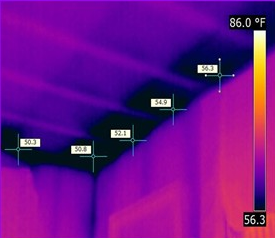Here's how the design and construction industries integrate today...
The client hires an architect to design a building. The architect designs it over the course of a year(s) with hundreds or thousands of discussions and decisions made between the client and architect. This immense body of knowledge is summarized into drawings, then we send them out to builders for construction bids. We advise the client to hire the builder with the best reputation, best price, and best understanding of the project goals. We value engineer the plans as needed to make the construction cost lower since it is inevitably always more than the client wants to pay because of clients asking for more than can be afforded. We agree on a scope of work and a construction price, and the builder starts building. During construction, the builder doesn't know the plans as well as the architect (how could s/he), so errors get made. Then the plans need to change to adapt to the error. Or the plans don't have a specific piece of information, so the builder just builds whatever benefits him most (instead of for the client's benefit), then the client doesn't like it and wants it changed. Again the plans need to change. The architect is in the role of protecting the client's investment. This process of misinterpreting the plans happens continuously during the entire construction process because the builder does not understand the plans entirely (since the builder was not privy to the thousands of decisions made before they were selected to build the project AND the builder wants to build quality things in the quickest/cheapest way typically to maximize their profit.) The architect acts as the client's advisor during the whole process to insist the builder builds according to plan, and this creates an adversarial relationship with the builder due to all the inevitable misinterpretation in reading complicated technical drawings representing thousands of decisions. The architect is paid hourly for the efforts of protecting the client's investment, and clients typically do not want to pay for this service. The builder also charges for the time to do quality control by working with the architect, reading and interpreting the drawings with the architect, and communicating all of this information from the architect to the their suppliers and sub-contractors. The builder must be successful in re-communicating information from the plans to the rest of the construction team. Therefor the builder should know the drawings better than anyone. Is that realistic though?
Here's how design and construction USED to be a hundred years ago, and how I am working to change it for the future...
The client should hire an architect to design a building AND MAKE SURE THE BUILDING GETS BUILT PROPERLY. To achieve this, the client is effectively hiring the architect to "build" a building. Newsflash, most builders don't build buildings...they hire other people (subcontractors) to build it for them. So why doesn't the architect just do this? Since the architect knows the plans better than anyone else (and GOOD architects also understand construction better than anyone else), the architect should be the person directly communicating the drawings to the sub-contractors and suppliers.
Why don't more architects just do it this way? It's because most architects don't have enough money to finance the construction of the project, and they are adverse to the risks that come with construction. The architects are typically trying to protect their clients from risk while also protecting themselves from risk. This risk is worth something. This risk is really what builders are being paid for (even if they never pickup a hammer and get their hands dirty). Architects also have a valuable skill set (that cost a lot of time and money to achieve and maintain), and spreading that skill set to oversee many projects simultaneously is necessary for business model of the professional to work out financially.
Here's a solution I'm working on and have tried a few times successfully...
To mitigate the financial aspect, the client could just pay the subcontractors and material suppliers directly. The architect is already reviewing the builder's invoices anyway to authorize the client to pay the general contractor for work that is completed properly. If the client just pays the subcontractors or suppliers directly, this means the architect or the builder would not need to take on the risk and cash flow problems of paying thousands or millions of dollars to those material suppliers for products or subcontractors for services. In my opinion, the client is already taking on that risk anyway, then transferring it to the builder for a period of time. The builder then upcharges every cost they incur by 20% to take on this risk and make a profit. Instead, the architect could just advise the client as to when to write checks to suppliers and subcontractors, and the client could just keep that risk. Remember the risk is worth something, right? That means the client saves money if they carry the burden of the financial risk, and the builder avoids that part of the risk. Again, the client is ultimately paying the money anyway, so why pay an inflated price to a builder, just so the builder can pay that money to the subcontractors? The builder is essentially being paid to operate as a bank for a series of monthly loans in exchange for their experience with dealing with the construction budget, construction schedule, and monitoring subcontractor’s performance.
The rest of the risk that comes with construction is in the quality control and integration of the work of the various subcontractors. If the walls are not framed properly, the shower tile will not be straight, for example. Someone needs to be held accountable for all quality issues. Normally, the builder is holding the subcontractors s/he hired accountable for that quality. This is the builder shifting the risk to the subcontractor. This is extra work for the architect, sort of. Architects are already monitoring the quality of construction to ensure it meets the standards in the drawings, but the architect usually has the convenience of just telling the general contractor to "fix it." The general contractor then tells the subcontractor s/he hired to "fix it" if it was not built according to the plans. The architect could easily communicate that directly to the subcontractor (more efficiently) and also take on the work of hiring subcontractors. The architect can still bill hourly for this service, and it will still be a savings to the client since the client would not be paying for the sum of the architect's time, builder's time, and builder's percentage fee markup of 20% that is higher than an architect’s ordinary fee.
This method effectively puts more work on the plate of the architect and keeps the finances in the hands of the owner. The end result would be at least 25% savings in the cost of construction. This is because there's simply no 20% markup on the cost of construction by a builder, and many of the costs of project management during construction get shifted from the builder to the architect (who is the person who understands the plans more than anyone). This means there would be no misinterpretation of the drawings, less drawings would need to be created in the first place, less communication needed, fewer construction meetings, and less rebuilding any incorrectly built portions of the project. All of these result in financial savings and time savings.
How do I plan to start doing this? I already have and am scaling it. I have started small and focused on working with the best builders who "get it." This is not be the most ideal method for every project, but it does make sense for many. It will scare some builders. It is atypical. Builders currently build AND currently run the business of managing the build. Separating the two is the goal of this method. Get expert craftsmen to construct. Get highly organized managers to manage. Many builders never went to college but are managing the biggest expense of a homeowner’s life! It is not easy work to manage a construction budget. I will seek out to work with builders (and I already do) who will allow the architect to take on a more leading role in the construction process and are willing to partner in the coordination of getting the projects built effectively. I have already hired every type of subcontractor, I know how to manage them, and I can effectively communicate the design goals and construction parameters using their language. (I also speak enough Spanish to be effective when needed.) The projects I have already attempted in this method have saved the client money while allowing them to have more control, understanding, and confidence in their projects. This revolutionizes the way buildings are designed and built with an architect (experienced in construction) at the helm. It's "design and build", not "design then build."
If you’d like to learn more about our design process, visit www.josharch.com/process, and if you’d like to get us started on your project with a feasibility report, please visit www.josharch.com/help



















